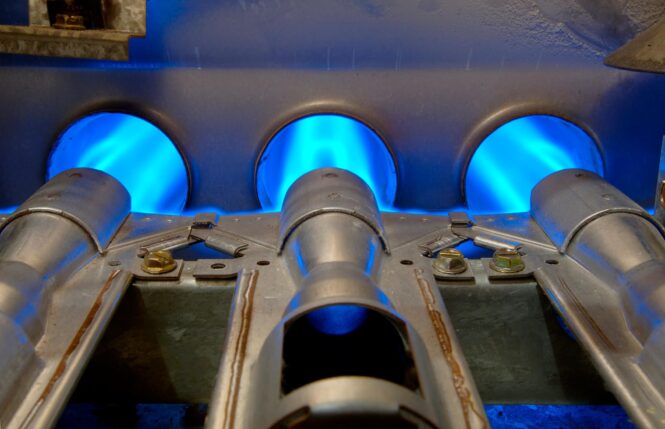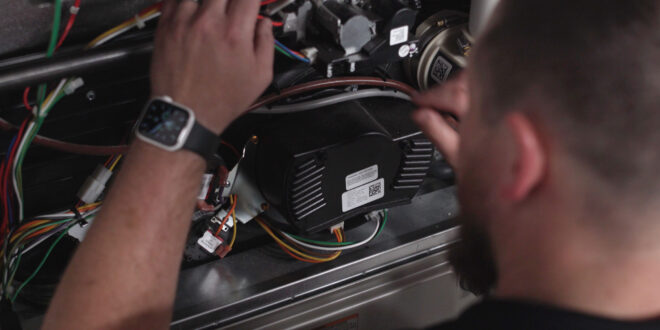Winter is here, and everyone is preparing for the long cold season. You should gear up and get ready to face the winter cold with bravery. As the temperatures drop, you do not want to shiver and experience discomfort while in your magnificent home. So, you must test your heater.
It is only imperative that you test and make sure that your heater is ready for the winter season. You can perform the tests by yourself or hire a reputable HVAC contractor to help you. The good news is that Autumn Air Heating and Cooling offers same-day heater repair services.
How to Test if Your Heater is Ready for Winter
However, there are multiple ways to test if your heater is ready for the cold season. This article will discuss various tips you can explore to ensure your heater is well-prepared for the winter.
Let’s look at the methods to test your heater below.
1. Check and Replace Your Air Filter
The most significant task is to check your filter; if your warmer is faulty, repair or replace it. Heater filters play a vital role in protecting your furnace from gaining dust particles and dirt. In addition, they keep your home clean.
Most heater filters have an approximate lifespan of three months. However, if you stay in an area with high levels of pollen or dust, you may be forced to replace them more regularly.
If your filter gets clogged up with dirt, it can result in the heater using extra energy and, in the end, a hike in utility bills.

Additionally, according to the U.S. Department of Energy, clogged filters accounted for multiple respiratory problems. Though different types of heaters differ in prices, replacing your filter is mandatory to ensure you do not get disappointments during winter.
2. Turn on Your Thermostat
Before the cold winter kicks in, you must conduct a trial run for your heater. Just switch on your heater and let it run for some time. You can check for any unique and strange odors, noises, or potential hitches during that time.
Testing your heater will also ensure that there is adequate airflow. If your thermostat does not switch on, contact a certified technician to check it out for you.
3. Schedule a Professional Tune-Up
The best and most effective way to ensure your heater is ready for the cold season is by scheduling a professional tune-up. A certified technician will thoroughly inspect and clean any clogged parts during this time. On top of that, the technician will run multiple tests on the system to ensure it operates effectively and efficiently.
4. Check the Carbon Monoxide Detectors
Carbon monoxide is an odorless and invisible gas that can cause life-threatening life conditions if one inhales it in high percentages. Unfortunately, carbon monoxide can result in fatalities.
Therefore, by conducting such a simple check, you can protect your family from the immense danger of carbon monoxide poisoning.
If your detector rings an alarm, evacuate the premises immediately and seek help. Being diligent about carbon monoxide safety will help your family keep safe and healthy during winter.
5. Remove Any Obstruction from The Vents

It’s a simple but crucial thing to do to ensure your heater is ready for winter. First, eliminate all the obstructions that could be blocking the vents to ensure the free circulation of air throughout the house. It will also be vital in providing that poisonous carbon dioxide fumes do not build up.
Moreover, clearing the obstacles will ensure your heating system works efficiently and save you some coins from colossal power bills. The good news is that you can trace high power bills.
6. Make Sure that Your Emergency Switch Is On
The emergency switch on your systems activates the “second stage heating,” which emanates from inside your house. In most cases, the emergency heat helps when the heat pump is faulty.
The emergency switch will ensure that your ‘second stage heating’ is achieved without waiting for the cold to activate. It also ensures that all parts of your system get tested before winter.
7. Check the Emergency Switch Again
Check your circuit breaker to see whether any circuits have been thrown out or need to replace a new fuse. Additionally, ensure that your thermostat is connected and operating efficiently.
8. Check the Spaces Around Your Heating System
There is a high possibility that you last used your furnace at the end of the previous winter. You could have also placed some items dangerously close to the furnace. Before the cold winter kicks in, removing all the flammable items near your furnace is imperative.
9. Consider Buying a New Furnace if Your Current One Is Old

If you’ve had your furnace for too long, buy and install a new system. However, if your furnace has had proper maintenance throughout its lifespan, you do not need to worry about age. On the contrary, if you have neglected your furnace, it can only serve you for up to 20 years.
10. Cover up Your Condenser
Buying a cover for your unit outside is advisable if you have a traditional HVAC system. Doing so prevents ice from collecting inside, avoiding damage from tree branches, debris, and hail.
11. Test Safety Monitors
Your home should have carbon dioxide, radon, and smoke detectors installed. If your home does not have some, it is the right time to buy some. Check if all of them have functioning batteries and ensure that all the detectors are working before you switch on your heater.
12. Check and Oil the Blower
If your furnace has not been in use in the recent past, various components can end up falling into disrepair. One of the most crucial components to check is your furnace’s blower.
It would be best if you oiled your blower monthly to operate smoothly. Then, once the furnace is on, listen to any sound changes from the blower.
13. Clean the Heat Exchanger
Your furnace has a heat exchanger that looks like a set of coils and tubes looped repeatedly to heat the air. You should brush and vacuum the heat exchanger yearly while deactivating the heating unit. Contact a professional to ensure that your heat exchanger has no crack that could lead to the leaking of poisonous carbon monoxide.
Endnote

By following these simple tips, you can avoid the headache and expense of a broken heater in the middle of winter. However, if you’re still unsure about your heater’s readiness for winter weather, it’s always best to consult your local HVAC company to schedule maintenance or servicing.
 Imagup General Magazine 2024
Imagup General Magazine 2024



